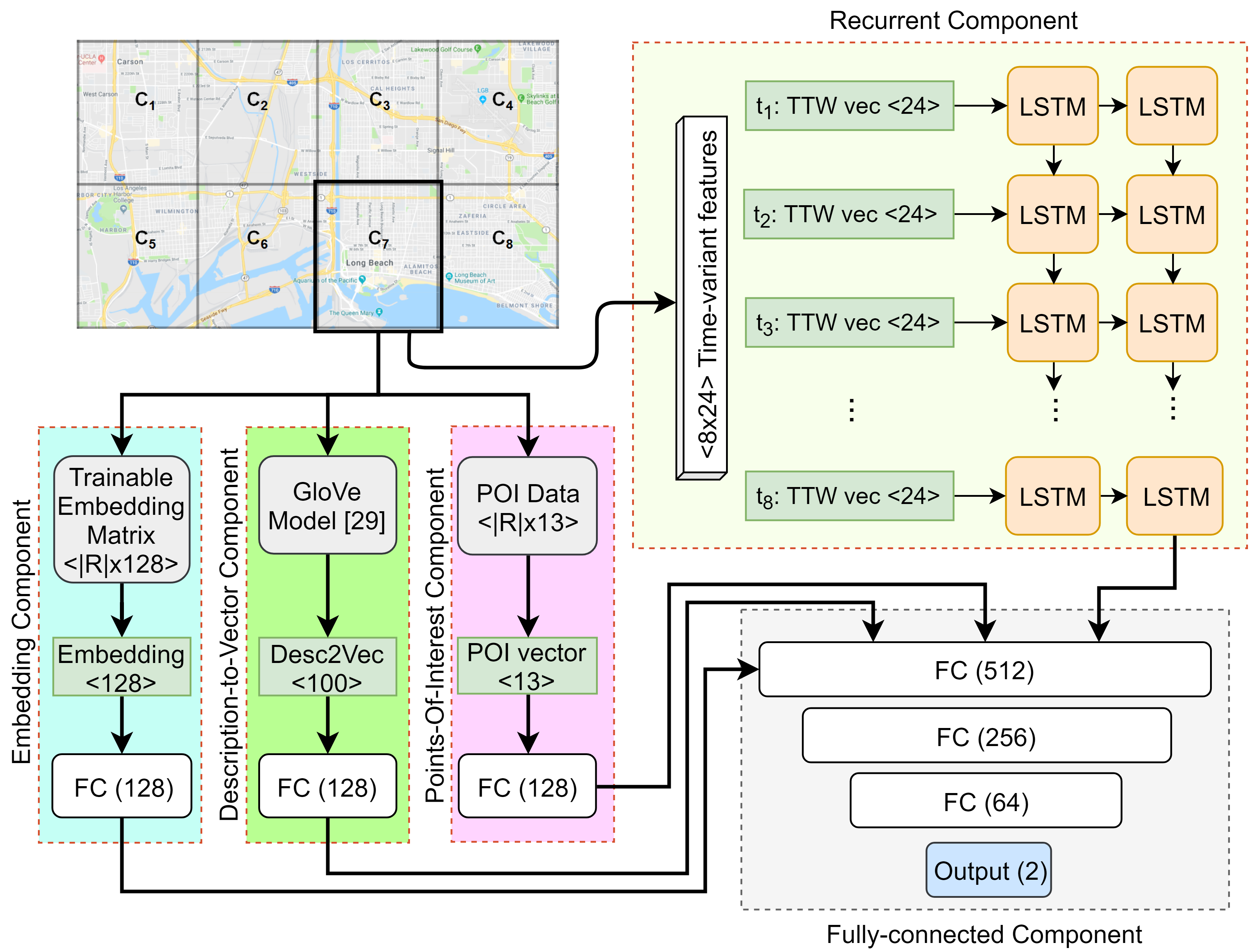Accident Risk Prediction based on Heterogeneous Sparse Data: New Dataset and Insights
Reducing traffic accidents is an important public safety challenge, therefore, accident analysis and prediction has been a topic of much research over the past few decades. Using small-scale datasets with limited coverage, being dependent on extensive set of data, and being not applicable for real-time purposes are the important shortcomings of the existing studies. To address these challenges, we propose a new solution for real-time traffic accident prediction using easy-to-obtain, but sparse data. Our solution relies on a deep-neural-network model (which we have named DAP, for Deep Accident Prediction); which utilizes a variety of data attributes such as traffic events, weather data, points-of-interest, and time. DAP incorporates multiple components including a recurrent (for time-sensitive data), a fully connected (for time-insensitive data), and a trainable embedding component (to capture spatial heterogeneity). To fill the data gap, we have - through a comprehensive process of data collection, integration, and augmentation - created a large-scale publicly available database of accident information named US-Accidents. By employing the US-Accidents dataset and through an extensive set of experiments across several large cities, we have evaluated our proposal against several baselines. Our analysis and results show significant improvements to predict rare accident events. Further, we have shown the impact of traffic information, time, and points-of-interest data for real-time accident prediction.
PDF Abstract
